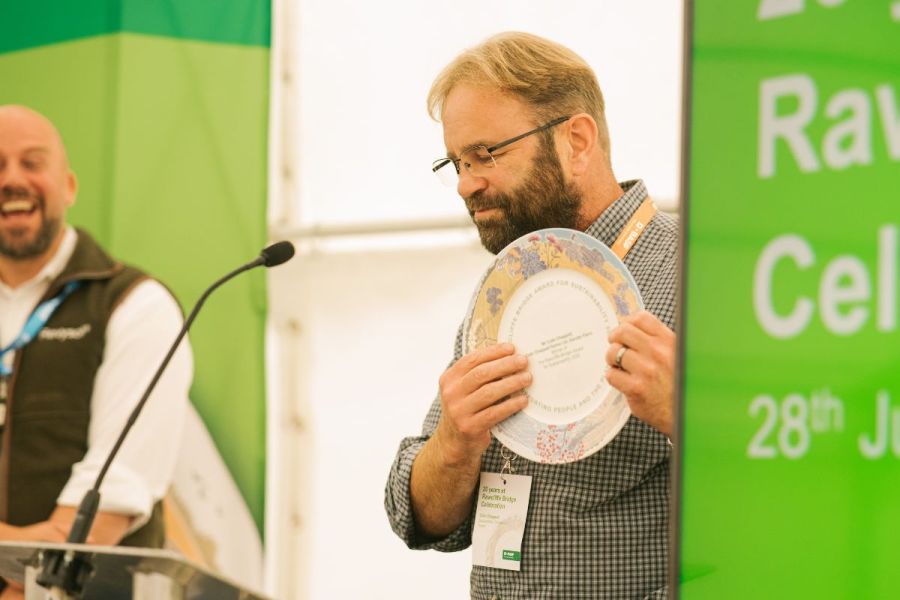There’s a lot of talk about farming in a more sustainable way but how does this translate into practice? CPM visits the winner of BASF’s inaugural Rawcliffe Bridge Award for Sustainability to find out.
“I’m trying to drive the narrative, rather than sitting back and listening to the backlash against us.”
By Mike Abram
One thing becomes clear early on in conversation with Colin Chappell – he’s not afraid to try new things to improve the economic, environmental, and social outcomes for his farm.
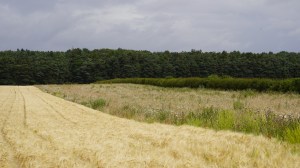
Colin Chappell has proven his competence in achieving success in balancing the economic, environmental, and social outcomes of his farm.
The three are often the pillars used to measure sustainability but getting the balance between them is not always straightforward. Understandably, many farmers will try to maximise one of the three, and that’s usually – but not always – economic success. But this can often inadvertently come to the detriment of the other two pillars.
It’s perhaps telling then that Colin, who farms in the Ancholme Valley, near Brigg in North Lincolnshire, doesn’t see himself as particularly outstanding in any one of these areas – but his competence in achieving success in all three was part of the reason he won the inaugural BASF Rawcliffe Bridge Award for Sustainability earlier this year.
The farm is a mixture of owned, contracted and tenanted land covering 810ha, while also doing 75% of the work on a further 140ha. Much of the farm is on what Colin describes as “tough soil”, including some areas with an up to 62% clay fraction.
His path towards farming more sustainably has been helped by two industry initiatives, he says. Entering ADAS’ YEN (Yield Enhancement Network) programme five years ago opened his eyes initially. “I was thinking I knew everything. Our wheat was doing 10t/ha every year and I thought I’d cracked it – put on a bit more nitrogen, a bit more chemistry and I’ll get to 12.5-15t/ha.
“But I got 52% – Mr Middleman. And I realised the system of putting more and more on to achieve that little bit extra didn’t fit – there’s often a point where you’ve reached the maximum your soils will do, while there’s something that will be holding you back, for example, blackgrass.
“So I realised I needed a more targeted approach to try to sort out problems one by one.”
That’s where the second initiative helped, says Colin – becoming an AHDB Monitor Farm from 2017 to 2021. It provided some of the tools, access to expertise, and conversations to improve farming skills and confidence to try new practices.
Agronomically, his three interlinked key challenges have been to improve blackgrass control, increase soil health and reduce nitrogen inputs after a carbon audit three years ago highlighted that improvements could be made to reduce carbon emissions.
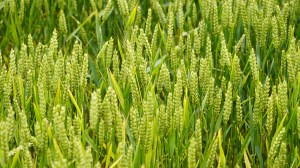
Nitrogen use has been cut across the farm by 20% but grain monitoring suggests nitrogen use efficiency in wheat last season was 84%, up from 60%.
“I’m not where I want to be with my carbon footprint – we’re still the wrong side – but I learned nitrogen was the key. You either sequester carbon in your soils or reduce emissions. When you look at growing a tonne of wheat, 50% of the emissions are associated with nitrogen.”
With 8% organic matter in some soils, sequestering more carbon into the soils is likely to be a challenge so he’s concentrated on trying to reduce emissions by monitoring nitrogen use through the season. He’s cut nitrogen across the farm by 20% and adds a carbon source in the form of molasses to make its use more efficient.
Grain monitoring suggests nitrogen use efficiency in wheat last season was 84%, a marked improvement on the previous 60%.
He also grows crops that have minimal or no nitrogen requirements as part of the rotation, which is now much more diverse – including combining or vining peas, beans, canary seed, spring oats, winter oats, forage maize and forage barley, alongside the arable staples of oilseed rape and winter wheat.
“Winter wheat is still our bread and butter – we grow mostly milling wheat for Warburtons, but also some feed and biscuit wheat,” says Colin.
As well as reducing nitrogen requirements, the diverse rotation is part of the blackgrass strategy, growing three spring crops consecutively to get on top of the weed, followed by winter wheat, OSR, then winter wheat again and winter barley. “We’re on a seven to eight-year cycle,” he adds.
The forage barley crop plays a crucial role in “walking the blackgrass off the farm”, he says. “It’s a cultural control that not many others use.”
Originally, he was growing hybrid rye for a local anaerobic digestion plant, but discovered that blackgrass was already shedding by the time of harvest. “Growing barley for forage moves the harvesting period forward two weeks in June.
“It’s a hybrid crop as that has thicker stems to generate more methane, and we grow it slightly differently as growth regulation is minimal. We ease back on herbicides and only use one fungicide instead of two. Around 120kg/ha of nitrogen is applied,” he says.
He also grows forage maize with its late drilling date helping control blackgrass before drilling.
It’s important to change tactics regularly, he stresses. “Blackgrass is a clever plant – it follows what you do. If you grow tall crops, it grows tall. If you grow spring crops, it germinates in the spring. If you plant early, it will come early.
“Ben Taylor-Davies, whom I follow for advice, always says you need to mix it up to get on top of it.”
Chemistry is the last resort, but he’s pleased new chemistry is arriving to bolster and diversify the armoury. He’s finding, even after three years of spring crops and other cultural controls, he still needs more than a cheap pre-emergence of Liberator (flufenacet+ diflufenican) to keep on top of it in wheat.
A Real Results trial this season will compare Liberator plus Proclus (aclonifen) with Luxinum Plus (cinmethylin) plus pendimethalin, he confirms.
One of the other things that has changed in recent years is his soil management, he says. “I want to do as little as I can to get the crop established, but as much as required, so I’m not a 100% direct driller.”
He’s trying to get to a one-pass system where one drill does everything. Currently he uses either a Väderstad Rapid with a set of system discs on the front, or a Triton Side-Press. “We use the Väderstad where we can, although it probably moves too much soil for true direct drillers, and when it gets too wet, we move to the Triton.
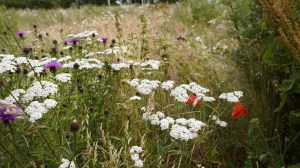
Flowering margins build “an army of minibeasts” that can get into crops and potentially help reduce insecticides.
“Recently we’ve started using a Grange low-disturbance subsoiler, which runs well in tandem with both drills by improving drainage channels in the soil.”
Combined with the diverse rotation and use of cover crops, he’s finding improvements in water infiltration rates and water holding capacity, allowing him to drill beans and wheat into November, which wasn’t possible previously.
Economic health is benchmarked against other farms, including those in his local group, using AHDB Farmbench. His full costs of production per tonne compare well with his peers, he says.
The strong financial position is part of the reason he’s been able to take on the 110ha tenancy without extra labour or machinery, and also purchase 16ha of land, a self-propelled spray and tractor without any finance in the past three years.
That doesn’t mean improvements couldn’t be made, he adds. Farmbench data suggests his fungicide costs are still relatively high, considering he’s using less nitrogen and sap and tissue analysis to bolster disease control with trace element applications.
He’s experimented with applying a “cocktail” of fish hydrolysate, humic acid and Carbon Balancer (enhanced molasses) just after a crop comes through the ground. “It feeds the microbes in the soil so they can then feed my plants. On spring beans last year, it lifted yields by 2.5t/ha, and 1t/ha on canary seed.”
Around 5.5% of his area is in environmental measures, situated in awkward and/or low performing fields or in areas taken out of production to create wildlife corridors around the farm.
“We’ve all got parts of the farm that aren’t as productive as others. For example, I have an 11ha field, where 2ha routinely floods. When the whole 11ha was last cropped with wheat, it averaged 8.25t/ha. We took that 2ha out and devoted it to biodiversity. The next time we cropped the 9ha left, it did 10t/ha.”
Identifying those areas started in 2006, with four fields planted with miscanthus, and further areas now in the Countryside Stewardship Mid-Tier scheme.
“One part of the farm is effectively a link from the River Ancholme to the village of Hibaldstow so wildlife can move between the two.”
He’s sited wild bird food mixes under powerlines to give birds a place to escape to when predators are around, with insect mixes next to them. It seems to be working, with an increase in wildlife being seen on the farm.
“The RSPB did a survey on the farm and the miscanthus was holding a lot of red list species, which hadn’t been seen here before. Last year, I saw egrets and the ditches now have fish in them again, so we are moving in the right direction.”
It’s also helping to build “an army of minibeasts” that can get into crops and potentially help him reduce insecticides. He’s not completely there yet – barley yellow dwarf virus is a challenge, but he doesn’t spray for cabbage stem flea beetle or bruchid beetles.
The social benefit of the environmental areas on the farm plays into one of his driving passions – helping to educate the public and especially children about agriculture.
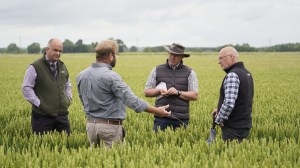
Frequent visits to the farm help Colin Chappell tell the story of how he farms to turn the tide on negative things he hears about farming.
“I’m trying to counter a lot of the criticism levelled at farmers by educating the public about what we do and attempting to drive the narrative, rather than sitting back and listening to the backlash against us.”
The primary activity he’s involved with is working in partnership with the Country Trust to bring schoolchildren on to his farm. The charity helps organise visits to real working farms for disadvantaged young people and Colin hosts 8-10 visits per year from schools in the surrounding area, including from Hull, Grimsby and Scunthorpe.
“We walk around the farm and explain what we do and why,” says Colin. “The first thing you see is these children’s faces when they step off the bus and see the wide-open spaces.”
He puts all the crops he grows on a table to explain the connection to the food they eat, and why there are nettles all over his farm. “Look at the ladybirds and the caterpillars and the biodiversity that is enhanced by just one nettle,” he says.
Equally important is the understanding the teachers and assistants gain from the visits. “The narrative is coming from other people at the moment, and we need to tell our story to turn the tide on negative things we’re hearing. By educating the kids, hopefully in 10-15 years that generation will grow up to understand what we’re doing and why,” he concludes.
What is the Rawcliffe Bridge Award?
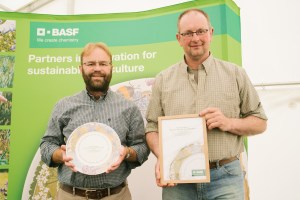
Two applications for the Award for Sustainability stood out – Colin (left) and runner-up Guy Prudom.
BASF’s Rawcliffe Bridge Award for Sustainability was launched to mark the 20-year anniversary of BASF partnering with Rawcliffe Bridge Farm in East Yorkshire, which aims to help demonstrate how to balance productive farming with wildlife management, says Mia Belfield, BASF Marketing Communications Manager.
“It’s part of the work we do to help give farmers a platform to advocate for themselves and the industry,” she says.
“Our view is that sustainable food production must go hand-in-hand with preserving the environment.”
This year’s award had around 20 initial applications, with two standing out – Colin and the runner-up Guy Prudom, from Northfields Farm in North Yorkshire.
“Colin just edged the judging through his approach to the environmental, economic and social aspects to sustainability – he had the full package to move forward with this idea of people, planet and profit.”
Winning the award is already opening doors for Colin, with his local MP contacting him for a visit to the farm after hearing about him winning the award.
“That’s exactly the kind of thing we’re looking to achieve,” says Mia.
She adds that the award fits into the global BASF campaign, Biggest Job on Earth. “The idea with Biggest Job on Earth is to allow farmers to share their success stories, their challenges, and their impact on food production and the environment.
“In the UK, we’re using it as a platform for farmers to share their story, and the Rawcliffe Bridge Award fits perfectly into the initiative.”
Entries for next year’s Sustainability Award will be open in the spring. “Our hope is to create a group of like-minded farmers through the award who can learn from each other and share their knowledge and strategies for sustainability more broadly.”
To find out more about Biggest Job on Earth and to show your support click here.
The Real Results Circle
BASF’s Real Results Circle farmer-led trials are now in their sixth year. The initiative is focused on working with 50 farmers to conduct field-scale trials on their own farms using their own kit and management systems. The trials are all assessed using ADAS’ Agronomics tool which delivers statistical confidence to tramline, or field-wide treatment comparisons – an important part of Real Results.

In this series we follow the journey, thinking and results from farmers involved in the programme. The features also look at some other related topics, such as environmental stewardship and return on investment.
We want farmers to share their knowledge and conduct on-farm trials. By coming together to face challenges as one, we can find out what really works and shape the future of UK agriculture.
To keep in touch with the progress of these growers and the trials, click here.
This article was taken from the latest issue of CPM. For more articles like this, subscribe here.

